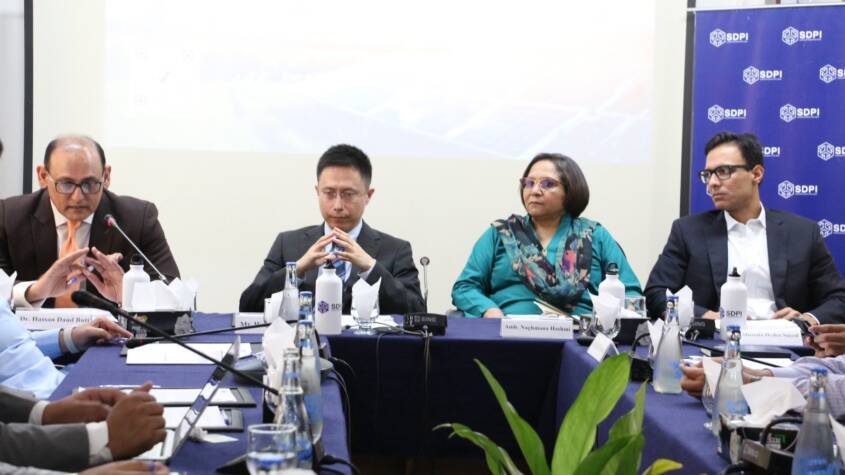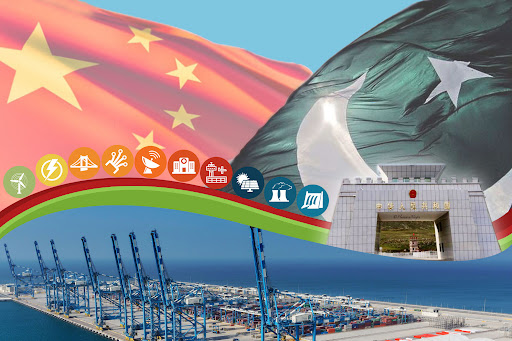ISLAMABAD-Former Ambassador of Pakistan to China Naghmana Hashmi on Thursday said developing an expert-led long-term strategic energy plan and monitoring mechanism was crucial to ensure just energy access and eradicate energy poverty.
She was speaking at policy dialogue on “Transforming the Power Sector: Exploring the Prospects of China-Pakistan Just Energy Transition Partnership (JETPs)”, organized by Sustainable Development Policy Institute (SDPI) and Pakistan China Institute (PCI), a news release said.
She expressed that by reforming economic and energy policy structure, energy access for industry and rural economies could be improved and export and economic growth could catalyzed.
Head of Political and Press Section, Embassy of People’s Republic of China in Pakistan, Wang Shengjie said that energy inflation during Russia-Ukraine conflict triggered a global shift in energy policies for “just” and “adjust” energy transition.
He suggested that currently Pakistan needed moderate and flexible energy policies to ensure adjust energy transition, introduce supply-side reforms, and diversify the power generation for sustainable energy supply.
He added that Biomass and Waste to Energy were overlooked areas with immense energy generation potential.
Energy efficiency was essential to address the circular debt issue which was the biggest hurdle in foreign investment, he said.
Senior Advisor and Research Fellow, SDPI, Dr Hassan Daud Butt highlighting the immense energy financing opportunity for BRI countries urged the government to leverage it to increase access to clean and affordable energy as well as for international financial institutions to introduce cheaper clean energy technologies in developing countries.
He added that Pakistan must address the headwinds to create a true, sustainable easy-of-doing business environment to attract foreign investors in Pakistan.
Director Green Finance and Development Centre, Fudan University, Dr. Christopher Nedophil said that Pakistan was among top 5 recipients of China’s energy financing which had expanded coal-powered generation from 0.15 GW in 2015 to 7.2 GW in 2023 under CPEC, reducing import dependency and foreign exchange reserve outflows.
However, despite economical cost of clean energy, renewable energy transition in Pakistan is impeded by policy inconsistency and local political economy.
Executive Director, PCI, Mustafa Hyder Sayed stressed that political will, bold decision-making and concrete policy actions were crucial to catalyze clean energy transition.
He further added that attracting foreign investments in energy and meeting climate and delivering on the 30% emission reduction commitments required developing technical capacity of public bodies in energy sector to formulate policies for competitive tariff structures.
He stressed that the gap in policies and follow-up actions must be bridged by launching pilot project on transition from fossil fuels to renewables and using the data to incentivize Chinese investors to relocate their industries amidst increasing global competition.
Chief Executive Officer, Moony Holdings, Moeen Abbas highlighted that the biggest challenge in energy transition was misalignment of risks and rewards for power companies as generation reward was 73% while distribution reward was 10%.
The low recovery on investment in energy sector and issues with payments of generation companies were tarnishing Pak-China relations, he added.
Research Fellow, SDPI, Dr Khalid Waleed highlighted that Pakistan needed US$50 Billion by 2030 and US$80 Billion by 2040 for clean energy transition with an additional US$30 billion required for coal phaseout and suggested to add Pak-China Just Energy Transition Partnerships (JETPs) into Pak-China strategic partnership to bridge financing requirement.
He suggested strengthening inter-ministerial collaboration along with academia and private sector and integrated and indicative energy expansion plan that was not solely focused on power sector but to entire energy landscape.
Senior Research Associate, and Lead, Energy Unit, SDPI, Ubaid ur Rehman Zia said that $12 billion Chinese investment was also locked in thermal assets and this investment needed an exit facility.
Thus, there is a strong economic case of transitioning to sustainable energy, in line with the green development commitments of both countries as the environment portfolio of power sector has deteriorated given rapid expansion of 6600 MW coal fleet in recent years; thus threatening the flow of climate finance.

















